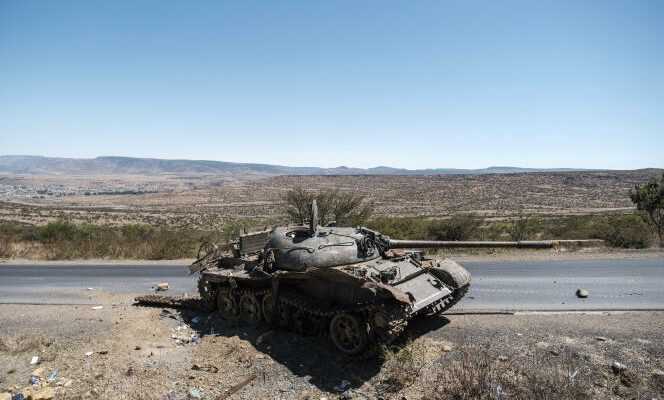To not miss any African news, subscribe to the newsletter of “World Africa” from this link. Every Saturday at 6 a.m., find a week of news and debates covered by the editorial staff of the “World Africa”.
It took more than seventeen months for a rapprochement to take shape between the Ethiopian government of Prime Minister Abiy Ahmed and the insurgents of the Tigray People’s Liberation Front (TPLF). While fighting has been ravaging northern Ethiopia for nearly a year and a half, the time for talks finally seems to be on the horizon.
The Ethiopian government said in a statement on March 24 that “unlimited humanitarian truce”and committed “to make every effort to facilitate the free entry of emergency humanitarian aid into Tigray”. The province of six million people, devastated and looted during the war, is under humanitarian blockade, hit by shortages of food, gasoline and medicine. There, some 5.2 million people are in need of humanitarian aid according to United Nations estimates.
In a response dated the same day, the TPLF assures that “if the circumstances arise, that our people receive sufficient humanitarian assistance and within a reasonable period of time, we undertake to put in place an immediate ceasefire”. The Tigrayan party even promises “to do everything possible to give peace a chance”.
A hitherto unpublished vocabulary, which aroused the enthusiasm of many observers of the Ethiopian conflict. Amnesty International’s deputy director for East Africa, Sarah Jackson, sees this as a “not positive for millions of people”.
Many obstacles to peace
A positive step certainly, peace not yet. In fact, these announcements do not immediately mean an end to the fighting, nor the delivery of the humanitarian aid promised to Tigray. At the risk of“another disappointment” as summarized by a humanitarian stationed in Addis Ababa, who recalls previous declarations of good intentions on both sides “which never materialized on the ground”.
Obstacles to peace remain numerous in northern Ethiopia. As a UN official slips privately, “on the front it negotiates, but concretely it stalls”. Main dispute: the occupation by the TPLF of part of the neighboring Afar region. Clashes between Tigrayan and Afar forces have displaced at least 300,000 residents of this arid province. And they complicate the delivery of humanitarian aid to Tigray, while the convoys are supposed to take a corridor crossing the Afar, in particular those of the World Food Program (WFP).
You have 60.04% of this article left to read. The following is for subscribers only.
